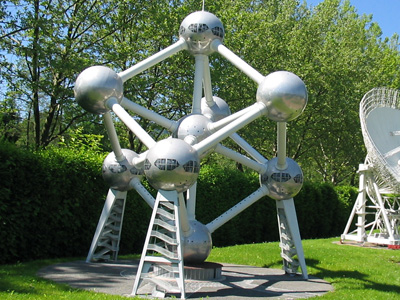
This is a copy of the Atomium monument in Brussels, Belgium, which forms the shape of a unit cell of an iron crystal magnified 165 billion times.
Atomic Structure 3
The study of atomic structure forms a large part of GCSE Chemistry. This is the last in our series of three quizzes on the topic and it looks not only at the numbers and arrangement of protons, neutrons and electrons in atoms, their atomic numbers and their atomic mass, but also at the numbers of electrons in the different shells of atoms and how the electrons in an atom’s outer shell are affected when ions are formed.
One of the biggest hurdles to understanding chemistry is the idea of scale. With atomic structure, we are dealing with processes and objects that we cannot see directly which is why it was not until well into the 20th century that protons and neutrons were identified. Our knowledge of what lies inside an atom has been discovered by using indirect observations, for example, the scattering of alpha particles as they passed through a thin piece of gold foil demonstrated that the mass of an atom was concentrated into a very small area at the centre - the nucleus.
Ready for more?
not all...
quizzers. Try to win a coveted spot on our Hall of Fame Page.







